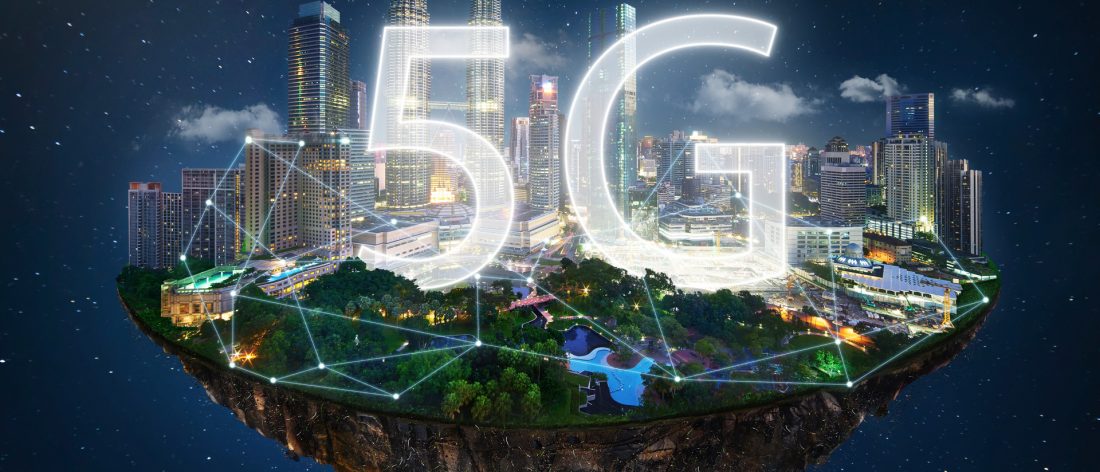5G mobile network seems like a concept of the future but halfway across 2018 it’s coming sooner than we anticipated. It has been grouped together with the likes of Flying cars, VR and AR, IoT, colony ready to be sent to live on Mars; the plan for all of them have been put on paper already along with the 5G technology.
5G mobile networks is the common factor that would help drive all of these upcoming pieces of technology across many devices by making them smarter than they already are; and what makes a device smart? It’s ability to share data with devices next to it, as fast as possible.
Think of a man who has just found a new piece of information; he will only be called wise if he can let this newfound information known to his peers. Similarly devices will only be called smart when they can share knowledge with its neighbours so they can do the same and eventually our devices are all aware of our likes, dislikes, habits and other small details about us which makes our lives much easier than before.
This information exchange needs to be as lossless and as quick as possible. As of today, the download speed that a 4G connection promise is 6-12MB/s Which has allowed users to essentially turn their smart phones in a mobile broadcast centre to share and send information, ideas, photos, videos to all the people on the internet effective immediately.
This speed however still isn’t fast enough to allow even more effective pieces of technologies to run on it. Driverless cars, VR, more functional drones are just a few technologies which will receive a huge boost from it; more critical uses includes the medicine industry to perform surgeries remotely.
From the evolution of the previously installed 4G to the newly looked upon and under testing phase 5G internet, we have been really hopeful, to say the least. To those who still feel the need to top up their previous knowledge about the same, here are a few answers to the question: What is a 5G mobile network?
What is it?
The next generation of mobile internet is known as the 5G or the fifth generation of mobile internet. This standard of internet connectivity is powered by latest devices working efficiently to power the devices of the features running 5G mobile standards.
The expected speeds are somewhere at the average of 1GB/s (and top at 100GB/s) and can help the rising revolution of devices working with the IoT (Internet of Things) with its fast data transfer speed transferring huge chunks of data seamlessly to let the devices talk to each other effectively.

How does a device achieve 5G speeds?
A number of new technologies combined together will power this technology with such speeds. These technologies, however, are still needed to be decided by the multiple vendors who will be providing the 5G internet connectivity to you. There are a few popular ones which will be picked up by most vendors, which are: Smaller cells, Millimetre waves, MIMO (Multiple-input Multiple-output), Beam-forming and finally, a full duplex connectivity.
The primary technology, however, would be the Millimeter waves that work to provide such high speeds. They are named after the size of their waveforms which is shorter than an average wavelength lying somewhere between a 30-300MHz range. These waves, due to their short wavelengths, need to be transmitted to a distance shorter than what waves travel today.
This calls for the setup of small cells, which are basically miniature versions of the otherwise huge cell phone towers. Since they won’t require a lot of power due to their minimum size, they will be installed in inconspicuous locations like light poles, building rooftops, and many others across the city.

Challenges and drawbacks
While the entire premise looks to be appealing to the eyes, there are significant question and challenges that are puzzling the development teams across the globe trying to develop this technology. Granted that each day this is being looked into, but to provide a 99.9999% error free connectivity to its users by 2020 is a task like none other we’ve seen today. As of now a few of the major issues and challenges that the developers and researchers are facing while testing this new technology are listed below.
Short Range
As mentioned before, millimeter waves have an extremely short range in terms of the distance they can travel. This effectively means that the number of Small cells that are to be installed in the region will be significantly higher.
This would eliminate a lot of sub-urban and country zones from receiving the said technology in the first or second phase of installing the said network which effectively means the urban hotspots and large cities like New York, Chicago, and California can be the first ones to receive the said network. In fact, the big players have already started the testing of 4.5G or the LTE-A version of connection in major cities which is a middle step between 4G and 5G.
Network deployment and management
Deploying and managing the network of 5G would be a slow and intricate process. With the current picture in place, you can expect the technology to host a multi-layered structure that allows the connections to run fast speed data connectivity as we zoom in on a Small cell network. At the same time, the wide area macro layer will be able to run the slower speed data connections as per the needs of the customers.
Another major issue that comes while trying to set up the 5G connection is the size of the waves. Since the Millimeter waves are shorter in size than an average wavelength, it might not be able to penetrate and move through dense surfaces. In certain cases, even something as small as a leaf on a tree would be able to disrupt connectivity. This needs the Small cells to be more densely deployed in an urban area which is again a little difficult to manage.
Cost
Cost is one of the biggest factors that affect the entire project to be more resourceful than what it is now. New technology costs more than the pre-existing ones ideally but it is always expected to be more cost-effective than what the previous tech configuration was. Customers wish to not pay for the significant increase in the technology cost which would be in the case of 5G technologies knowing the amount of infrastructural and technological investment put in the entire project.
The researchers are thus trying to minimize the cost by using macro cells which would be working over the previously mentioned small cells and aligning these so that the control plane signaling would run on the macro cells and the user plane data would be allowed to run on the small cells. This significantly reduces the cost during the deployment of said technology.
This march towards the 5G dependent world therefore is still slow. The earliest 100% 5G dependent data model is expected to work somewhere in the year 2020 which although is still a year and a half away, is not as long as we thought it would be.
The users like us are still waiting with our hearts full of hope to witness how a connection would look where you would be able to download and run a 100GB 4K movie in a matter of mere minutes.
Stick around on routerloginsupport.com for more updates about the same.






